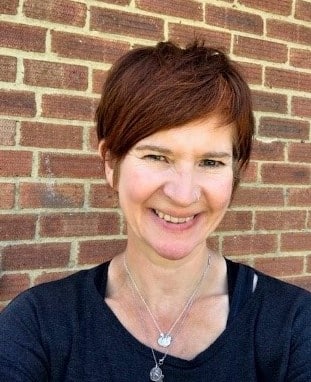How do you monitor mosquitoes using their sound?
Wednesday 9th Feb 2022, 12.30pm
What do you think of when someone says “the most dangerous animal in the world”? A lion perhaps? Or a poisonous frog? Well, one species of mosquito – Anopheles gambiae – is often referred to as such, owing to its enhanced ability to transmit malaria, a deadly disease which led to 627,000 deaths in 2020 alone. A. gambiae isn’t the only species of mosquito that is able to effectively transmit malaria, and each species exhibits different behaviours and requires a different management strategy. But how do you tell them apart? In this episode, we chat to Dr Marianne Sinka, Senior Researcher on the Humbug Project which uses smartphones to identify mosquito species using their unique ‘hums’.
(Buzzing)
Emily Elias: That sound. Usually, you can hear a mosquito long before you spot it. While not all mosquitoes are bad – think back to the episode we did about chocolate and how they pollinate cocoa trees – some, however, are the deadliest animals alive. On this episode of the Oxford Sparks Big Questions podcast, we are looking at malaria and we are asking: how do you monitor mosquitoes, using their sound?
(Music)
Hello, I’m Emily Elias, and this is a show where we seek out the brightest minds at the University of Oxford, and we ask them the big questions. For this one, we found a researcher ready to use her smartphone for the greater good.
Marianne Sinka: My name is Marianne Sinka. I’m a postdoctoral researcher at the Department of Zoology at the University of Oxford. I am the Senior Researcher on ‘HumBug’, which is a project where we are trying to use the wing beat or the sound, the flight tone, of mosquitoes, to identify them and to be able to work out where they are, to be able to count them. This is to help our work in monitoring the mosquito vectors of malaria.
Emily: Why is it important to know which mosquito is out there, and being able to identify them?
Marianne: Many people don’t actually realise that there’s more than one mosquito, but there are actually over 3,500 species of mosquito. Of those, there is only one genus that is able to transmit human malaria, but there are still over 480 species of those.
Within those, there are about 75 that can transmit malaria. There are about 40 that are really good at transmitting malaria, particularly dangerous, but, even amongst those 40, there are different behaviours that can affect how well they transmit malaria.
In Africa, for example, there is one species, Anopheles gambiae, which is what people may have heard of as being described as the most dangerous animal in the world. This mosquito is particularly good at transmitting malaria, whereas there are other mosquitoes that are able to transmit malaria in the same locations, but they may not be quite as efficient.
Different mosquitoes have different behaviours. That means that we need to target how we control them in different ways to make it most effective.
Emily: How are mosquitoes currently being monitored?
Marianne: What is considered to be the gold standard is the one that most people find most interesting or most shocking. The best way to understand what mosquitoes are coming to bite humans – and, therefore, spreading disease to humans – is to, essentially, pull up a stool, sit down, roll up your trousers, and wait to see what bites you.
We have vector experts who spend their time doing this. They go out at 6:00pm and they sit there for 12 hours, waiting to see what bites them, using torches and trying to, basically, pick off the mosquito before it actually does manage to bite them. This is called ‘human landing catch’. This is, as I said, the gold standard. Obviously, there are a lot of ethical issues with this, so it’s great but very problematic.
Emily: Yes, it’s wild. Obviously, you’re coming at this from a different angle to try and tackle the malaria problem. What’s your big idea of using sound?
Marianne: Mosquitoes are very unique in the way they fly. They have what’s called a ‘truncated wing beat’, so their wings, kind of, stutter. That makes a very unique sound. Most people would be able to recognise the sound of a mosquito. If you’re going to bed and you suddenly hear that whine, that very specific whine, you know it’s a mosquito. It’s not a moth or anything else.
That very specific sound allows us to identify mosquitoes from other insects. But, more interestingly, different mosquito species sound different because the flight tone, or that whine that they make, depends upon the size of the mosquito, depends upon how they move their wings and depends on the morphology of the wings, as well as other factors – for example, the sex of the mosquito. A male mosquito has a much higher sound than a female mosquito of the same species.
There are lots of influences that can impact on how that mosquito sounds when it flies. We can try and detect those differences, and try and identify the species, and also try to count them.
Emily: Okay. You actually have two audio examples that we’re going to take a listen to. So, mosquito A, can you tell me, what is mosquito A?
Marianne: Mosquito A is Mansonia africana. It’s a large mosquito, so it has quite a loud and low flight tone.
Emily: That’s mosquito A. Who is mosquito B?
Marianne: Mosquito B is Anopheles arabiensis. Now, Anopheles arabiensis is a sister to Anopheles gambiae, so it’s a very good vector, but it’s not quite as good as Anopheles gambiae. It has very different behaviour to Anopheles gambiae, which means that, if you were to find Anopheles arabiensis, you would do a different kind of control than you would if you find Anopheles gambiae.
Emily: You can hear the subtle difference in them, but this is obviously audio that you guys, maybe, have taken in a lab, have worked with. How do you actually do this in the field and be able to detect between the two in a really noisy environment where lots of things are happening?
Marianne: At the moment, the way we’re doing it is we’ve developed a method to capture the sound of the mosquito as it comes into someone’s house, as it comes into someone’s bedroom, and as it tries to bite them.
The limitations that we have are that, because mosquitoes are very small insects, to be able to record them well, they need to come within about 10cm-ish, depending on the amount of background noise, to the microphone, so that we can get a good sound recording.
The majority of the mosquitoes that transmit human malaria tend to bite at night because they’re adapted to bite when people are asleep and, therefore, vulnerable. They’re not going to slap those mosquitoes away.
That’s why bed nets work very well, so what we’ve done is we’ve adapted a bed net and placed a smartphone that’s running an app, called the ‘Mozz Wear’ app, in that so that, when the mosquito comes to try and bite the person sleeping under the bed net, they fly near our smartphone and we can capture the sound.
Then we take that sound. It gets uploaded to the servers, with our colleagues in the Department of Engineering. Those guys have developed some fantastic algorithms that can then detect the mosquito from the background noise. So, we run the audio through the algorithms, and it’s able to pull out the sound of the mosquito from that background.
Emily: How long did it take you guys to be able to even put all of these different working parts together, from identifying the mosquito, to creating an algorithm that would tell it apart, to then creating something, an app that would go onto a smartphone that people could put in their rooms?
Marianne: We’ve been working on this now for about seven years. The app development was part of the Google Impact Challenge. That was the first three years of the project. Then, in more recent years, we’ve been funded by the Bill and Melinda Gates Foundation. This has allowed us to go out and actually collect wild mosquitoes and record them.
We have some collaborators in Tanzania, at the Ifakara Health Institute, and also in the Democratic Republic of Congo, the Kinshasa School of Public Health and the University of Bandundu. Those guys go out and collect mosquitoes carefully, so we make sure that the wings are not damaged, take them back to the lab, record them. That has allowed us to build up a database of over 8,000 mosquitoes that we could then identify to species. That has then gone to train the algorithms.
In the meantime, we’ve developed this methodology to collect the mosquitoes in the bed nets. So, the whole thing has come together. There have been a lot of moving parts, but overall about seven years to get to this particular point where we are now field testing the system.
Emily: About field testing, this is a big ask to put a microphone into somebody’s bedroom. How have people responded to that request?
Marianne: Actually, quite a lot of people have Alexas in their bedroom, so it’s something that the people are getting used to, but in the areas where we have been working – so, for example, in Ifakara – our colleagues in the Ifakara Health Institute have gone out, and they’ve spoken to people in the community and asked them, “Is it okay that we do this?” because, obviously, you have to make sure everyone is happy.
We’ve had some fantastic responses from people, people who have just said, “We just really want to be involved in something that might help.” These guys, they suffer. Malaria is a big deal. It’s estimated that in 2020 there were over 241 million cases. That’s just in that year, 2020. There were 627,000 deaths.
You just get a lot of really positive, helpful people who are willing to just… They run the system for us. We give them the phones and we ask them, “Can you put this in your bed net? Can you turn this on? Can you press this button to upload the data for us?” So, they are heavily involved and happy to do so.
We’ve been running a community study in there, just to actually make sure that people are happy and just to see how well it all works. So far, the results have been absolutely fantastic. The community is absolutely brilliant. We couldn’t be happier with them.
Emily: Because it’s on a smartphone app and everybody seems to have a smartphone these days, how game-changing could this be for the amount of data that you get in?
Marianne: It could be huge. At the moment, in the rural communities that are suffering most from malaria, smartphone usage or ownership isn’t that great, but we use budget smartphones that we buy locally. We can distribute those, but in the end we hope that anyone who has a smartphone should be able to download this app, and, with simple instructions, should be able to set them up and start generating and uploading data.
It could be game-changing, we hope, obviously, but just to be able to see long-term data, for example, see the seasonal fluctuations, to be able to see. Very interestingly, so when people go out and try a new method to control the mosquitoes, sometimes it works. Sometimes it works for a period of time, and then sometimes it stops working, but it will allow us to really pinpoint the time when an intervention stops working. Suddenly, the number of mosquitoes would increase.
If we have lots of long-term monitoring, lots of people putting smartphones in their beds or around their houses, and just listening, and monitoring, and letting us know, that will be a fantastic red flag and let people know: “Something is going wrong here. We need to go in and we need to work out what the problem is.”
Emily: What does it mean for you, as a researcher, to be working on this specific project and have such success?
Marianne: It’s really good. I’ve been working or researching into malaria mosquitoes for about 15 years. This project, if we can get it to work, it means that we will be able to massively increase the amount of data that we have. This will massively increase our ability to target these mosquitoes appropriately and to really make a difference in the way that malaria is affecting people.
Emily: This podcast was brought to you by Oxford Sparks from the University of Oxford, with music by John Lyons, and a special thanks to Marianne Sinka and the entire ‘HumBug’ team. Tell us what you think about this podcast. You can rate and review us on whatever podcasting app that you happen to be using. We’re also on the internet at Oxford Sparks. Check out our website, as well: ‘oxfordsparks.ox.ac.uk’. I’m Emily Elias. Bye for now.
Transcribed by UK Transcription.





